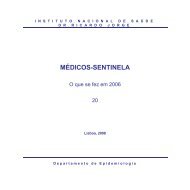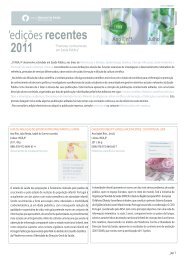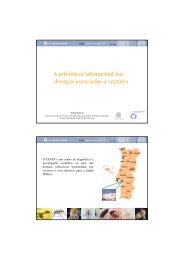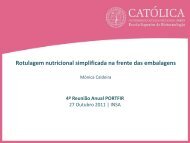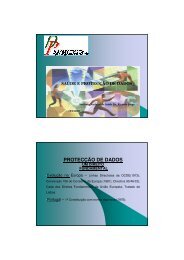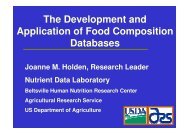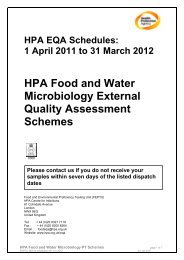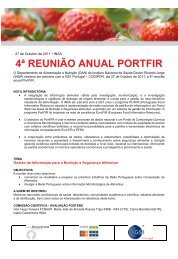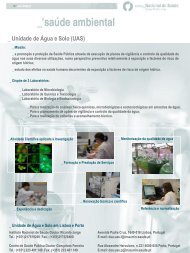European Society of Mycobacteriology - Instituto Nacional de Saúde ...
European Society of Mycobacteriology - Instituto Nacional de Saúde ...
European Society of Mycobacteriology - Instituto Nacional de Saúde ...
You also want an ePaper? Increase the reach of your titles
YUMPU automatically turns print PDFs into web optimized ePapers that Google loves.
GL-9<br />
REGULATION OF Mycobacterium tuberculosis CELL WALL LIPID<br />
COMPOSITION AND ITS EFFECT ON IN VIVO BACTERIAL PERSISTENCE<br />
Lee W. Riley<br />
School <strong>of</strong> Public Health, University <strong>of</strong> California, Berkeley<br />
The hallmark <strong>of</strong> M. tuberculosis is its ability to survive for many years in an infected host to establish latent tuberculosis<br />
infection (LTBI). We propose a new mo<strong>de</strong>l <strong>of</strong> latent infection that is based on the i<strong>de</strong>a that this organism may simply have<br />
readapted its “housekeeping” metabolic function to a new environment for its long-term survival. We propose that M.<br />
tuberculosis, which evolutionarily most likely originated in soil, has readapted a soil-survival strategy its ancestral species<br />
possessed to the granuloma environment in the human host. Granuloma cells constantly turn over every few days to<br />
weeks, and after they die, they un<strong>de</strong>rgo replacement by new cells that migrate into the granuloma. Hence, M. tuberculosis<br />
needs to readapt to this constantly changing environment, and we provi<strong>de</strong> evi<strong>de</strong>nce that this adaptation is mediated by<br />
M. tuberculosis remo<strong>de</strong>ling its cell envelope in response to signals produced by <strong>de</strong>ad granuloma cells. This remo<strong>de</strong>ling<br />
is mediated by a family <strong>of</strong> operons called mce (mce1,2,3,4). Disruption <strong>of</strong> the operons results in pr<strong>of</strong>ound changes in<br />
lipid pr<strong>of</strong>ile <strong>of</strong> the cell wall. The mce1 operon mutant causes free mycolic acids (MA) to accumulate on its surface, and<br />
other operon mutants (mce2,3,4) show evi<strong>de</strong>nce <strong>of</strong> lipid pr<strong>of</strong>ile changes in the cell wall. These operon products serve as<br />
energy-<strong>de</strong>pen<strong>de</strong>nt lipid importers. Lipid products released from <strong>de</strong>ad host granuloma cells that turnover may be used as<br />
carbon sources for the resi<strong>de</strong>nt M. tuberculosis. Thus, the “housekeeping” lipid metabolic function <strong>of</strong> M. tuberculosis may<br />
have been readapted in the granuloma environment as a way for this organism to survive, similar to the way its ancestral<br />
saprophytic organism survived in soil by scavenging <strong>de</strong>ad organic materials as carbon sources. Further elucidation <strong>of</strong> the<br />
interaction between M. tuberculosis cell wall and granuloma cell turnover may contribute to a new un<strong>de</strong>rstanding <strong>of</strong> the<br />
mechanism <strong>of</strong> LTBI.<br />
34 ESM 2009



